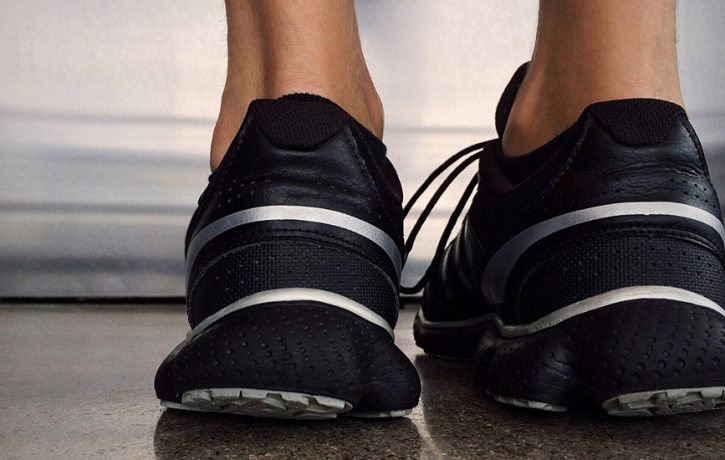Plantar Fasciitis, Plantar Fasciosis or Plantar Fasciopathy?

Plantar Fasciitis (PF) affects between 3.6 and 7 % of the normal population and around 8% of the running population. It is defined by pain on the underside of the heel bone but can also cause pain or discomfort into the arch of the foot.
The reason I have questioned the term Plantar Fasciitis in the title of this blog is that any pathology with the suffix “itis” by definition means it is driven by inflammatory processes. With PF, this is now known not to be the case, therefore, fasciitis is inappropriate.
The process that develops into PF is actually still poorly understood. As it progresses there is not necessarily pain or discomfort so individuals are blissfully unaware that things are happening at the heel. At the point where the Plantar Fascia inserts under the heel, there is a period of minor degeneration of the plantar fascia collagen fibres. This induces a physiological response that causes proliferation of fibroblasts (replacement collagen cells) that are laid down in a less precise manner than the original tissue. The disorganised nature of fibroblasts means that load is not efficiently distributed along the plantar fascia, thus the tissue has a reduced compliance to stretch.
In conjunction with the proliferation of fibroblasts there is an increase in vascular tissue ( i.e. arteries, veins and capillaries) and where blood vessels go, nerves will follow. Therefore, over time you end up with onset of symptoms due to new nerve endings in the tissue. (At this point if I was lecturing my students, I would ask them if that made sense in case I needed to put it in another way) I hope that makes sense!!
PF however, is generally a self resolving condition with most sufferers’ pain free within a year of onset. A year of pain sounds fairly significant, which it is so many people will try different treatment modalities to relive and manage their symptoms.
There are numerous ways to relieve the symptoms. Some will work for some patients and not others and some will not help at all, however, I take a broad brush approach with my patients and give them as many options as possible and try to get relief.
The following lists risk factors commonly found in patients complaining of plantar fascia pain.
- Excessive foot pronation (pes planus)
- Excessive running
- High arch (pes cavus)
- Leg length discrepancy
- Obesity (body mass index greater than 30 kg per m2)
- Prolonged standing/walking occupations (e.g., military personnel)
- Sedentary lifestyle
- Tightness of Achilles tendon and intrinsic foot muscles
However, we can realistically assume that for every presentation of PF with some or all of these factors going on, there will be more than a dozen people with the same physical findings and recreational habits that never develop PF in their lifetime. So how can we blame these things on the development of PF? That is why the medical research cannot categorically define the cause of Plantar Fasciopathy. I have listed some Conservative Treatment options for sufferers.
Stretching and Therapeutic Modalities
Stretching the plantar fascia and intrinsic muscles of the foot is one way that appears to help pain levels. New research looking at eccentric load (Load a muscle, then take it to an stretch while under load) has been shown to help also. Eccentric load has been thoroughly researched for the successful treatment of tendinopathy and epicondylalgia ( Tennis or golfers elbow), which is thought to be under similar pathological processes, so it stands to reason that as more data is collected it could well demonstrate a similar success rate with PF.
Rest and Analgesic Treatments
Initially, when pain starts, you may be successful in relieving symptoms with rest and some activity modification. Ice massage, with a frozen bottle of water or frozen orange rolled into the arch of the foot may be helpful. Nonsteroidal anti-inflammatory drugs such as ibuprofen, available over the counter in all chemists have also been demonstrated to modulate the pain (always get advice from your pharmacist before taking pain relief) .
A small randomized, placebo-controlled study of nonsteroidal anti-inflammatory drugs to treat plantar fasciitis showed short-term improvement in pain relief and disability when accompanied by other conservative treatments.
Arch Supports, Heel Cups, And Night Splints
These can help moderate pain in some individuals but the evidence is sketchy.
Injections
Although Corticosteroid and Platelet rich Plasma Injections have demonstrated good efficacy in helping with stubborn symptoms of PF, in a recent study, Dry Needling (medical acupuncture) was shown to relive pain in as short a time period as 4 weeks.
There are occasions where conservative treatment and management just isn’t enough to help an individual and they develop a chronic condition. In these cases there are still surgical options available, however, In my humble opinion these should be a last resort and as such conservative options should be persevered with to control the pain while the condition resolves itself.
If you are suffering with heel pain that you think could be caused by the Plantar fascia, I hope that this has been helpful and offered some practical advice that can help to understand the condition and reduce the pain or even resolve the issue faster than it would have otherwise.
This article was written by Matthew Oliver M.Ost DO ND. Osteopath.
- How Pushing Too Hard Can Affect Your Health - 23rd April 2025
- Finding Hope and Comfort Through Pain - 21st March 2025
- Non-Pharmacological Solutions for Managing Pain in Parkinson’s - 19th February 2025
